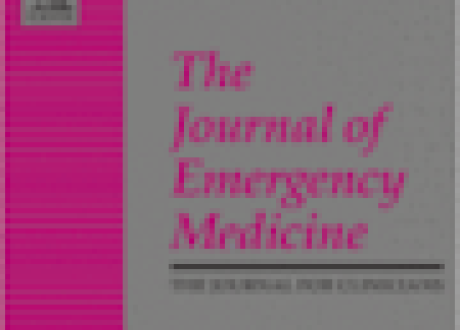http://orcid.org/0009-0008-0402-8074Jemima May Curran1, Aleksandra Mergo2, Sarah White1,
Bernard L Croal3, http://orcid.org/0000-0003-3812-7026Jamie G Cooper1
Correspondence to Dr Jemima May Curran, Emergency Department, Aberdeen Royal Infirmary, Aberdeen, UK; jemima.curran2@nhs.scot
In the ED, laboratory high-sensitivity cardiac troponin (hs-cTn) tests facilitate ‘rule-out’ of myocardial infarction![]() (MI).1 Contemporary point-of-care (POC) troponin tests have inferior analytical sensitivity,2 preventing rapid ‘rule-out’ strategies in near-patient settings. The new Siemens Atellica VTLi POC test meets hs-cTn criteria.3
(MI).1 Contemporary point-of-care (POC) troponin tests have inferior analytical sensitivity,2 preventing rapid ‘rule-out’ strategies in near-patient settings. The new Siemens Atellica VTLi POC test meets hs-cTn criteria.3
Between June and September 2022, adult ED patients (≥16 years) with symptoms suspicious for MI and no ST-segment elevation on ECG were eligible for inclusion if staff trained on the POC instrument were available. Simultaneously, blood was taken for near-patient testing with the VTLi POC hs-cTnI assay (limit of detection (LOD) of 1.2 ng/L, sex-specific 99th percentile upper reference limits (URLs) of 18 ng/L (female) and 27 ng/L (male), and an optimised ‘rule-out’ threshold of <4 ng/L)3 and for laboratory testing with the Abbott Alinity hs-cTnI assay (LOD of 1.6 ng/L, URLs of 16 ng/L (female) and 34 ng/L (male), and an optimised ‘rule-out’ threshold of <5 ng/L),4 the standard-of-care assay for this evaluation. Patients with no result for either assay or who presented ≤2 hours from symptom onset were excluded and POC results were not available to clinicians.
The end-point was an index presentation type 1 MI or cardiac death, independently adjudicated by two investigators (blinded to POC results) according to the fourth universal definition of MI. …










